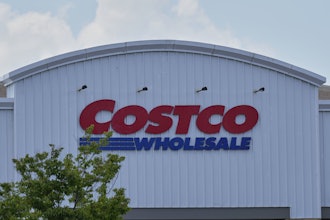Companies in nearly every industry today are experiencing growing labor shortages. Warehouses and distribution centers, in particular, are struggling to keep facilities adequately staffed as aging industry veterans retire and the younger workforce shows declining interest in labor-intensive, material handling careers. These shortages, compounded by increasing consumer demands and e-commerce requirements, leave many facilities unable to keep up.
By relying solely on manual storage and order fulfillment, warehouses get stretched too thin. They fall behind trying to balance a shrinking staff, while accurately fulfilling orders and accommodating growing inventory quantities. A year-round struggle, these challenges hit especially hard during the peak seasons, when demand dramatically spikes and orders pour in. Fortunately, automated technology is available now that can help manual facilities not only overcome staffing challenges, but also improve order fulfillment efficiency during busy periods and year round.
Lowering Labor Costs and Coordinating Warehouse Staff
As order volumes increase due to business growth and seasonal spikes, facilities that manually pick and pack orders for shipment often lack enough personnel to keep up with demand. This shortage results in added overnight shifts and overtime hours to maintain operations, which adds to the cost of labor. Many warehouse managers turn to hiring temporary warehouse workers from an already limited labor pool, sometimes even doubling their workforce with untrained and unqualified staff.
Additional shifts, overworked employees and seasonal workers not only mean greater expenses, but also lead to high turnover rates, safety hazards and operational inefficiencies. Instead, warehouses and distribution centers can use a flexible, scalable automated material handling solution to meet demand and accommodate growth. Automated systems can keep operations running 24/7, without the traditional costs of manual handling. These benefits offer significant cost savings over time, resulting in a high return on investment.
With an automated system fulfilling orders for the majority of products, existing staff are no longer responsible for picking and moving everything in the warehouse. Instead, skilled employees can take on more sophisticated tasks, such as supervising these systems or managing products that have special handling requirements. These alternate jobs are less strenuous and labor-intensive, creating an easier, safer working environment. The evolving role of the warehouse worker may even create renewed interest in the profession among the younger workforce.
Fulfilling Orders on Time and Accurately
Today’s consumers demand more product variety and quicker delivery times. To stay competitive and keep customers happy, warehouses and distribution centers have to rapidly and accurately fulfill more frequent orders. And as a growing number of buyers prefer to purchase goods online, companies must handle high volumes of small, direct-to-consumer shipments on top of fulfilling large quantities for retailers.
Outdated, manual operations may struggle to adapt to the fast-paced environment of e-commerce and the new requirements of multichannel fulfillment – a task further intensified by insufficient staffing and busy peaks. Whether fulfilling large pallet-sized orders or small boxes, a combination of robotics hardware and intelligent software can optimize the flow of goods to enable flexible orders, higher accuracy and shorter lead times.
Distribution centers that ship goods in layered quantities, for example, can implement an automated layer picking solution to quickly fulfill complex orders with 100-percent accuracy. Combining fast gantry robots with a clamp gripper and vacuum picking, these systems can pick up virtually any type of product from stacked pallets on the warehouse floor in one layer, entire pallet loads or multiple layers to create rainbow pallets. This speed and flexibility makes the solution ideal for fulfilling large volumes of frequent, year-round orders and optimizing fulfillment during busy retail seasons.
Optimizing Storage Space to Managing More Inventory
As demand grows and consumer preferences fluctuate, companies must manufacture products in greater numbers and with more varieties. And during peak periods, many further expand their inventory with seasonal offerings for customers. Manual facilities easily run out of available warehouse space, and efficient storage and retrieval becomes a major obstacle.
Warehouses need a solution that can make the most of available square-footage, as well as handle both slow- and fast-moving products. Automated technology can be used to create high-density storage areas that can house more goods, while using up to 50 percent less space. Using a floor–based storage system, facilities can stack goods on the warehouse floor for overhead retrieval. This layout can achieve high product densities and easily accommodate expanding inventories and SKU varieties.
Further, warehouses can implement a goods-to-man solution that uses a combination of an automated storage and retrieval system (AS/RS), gantry robots integrated with a shuttle device, a high-speed conveyor system and manual order-picking stations. SKUs are stored in totes, bins or trays, then automatically brought directly to a staff member in proper picking sequence for accurate, rapid order fulfillment. This system allows facilities to pick an even greater number of orders per shift and can be up to six times more efficient than manual picking alone.
Finding the Right Solution
If your manual warehouse is struggling with staff shortages and busy peak periods, it may be time to automate. With the right technology, implementation does not have to be a massive project; many flexible, modular solutions can integrate seamlessly into existing operations to function as “islands of automation” and scale as your business grows.
With so many technologies on the market today, it can be difficult to identify exactly which solutions would best meet your unique business needs. An experienced solutions provider can streamline the process by assessing your facility, processes and products and determine where automation would deliver the biggest impact and greatest ROI and where it would best to remain manual. By optimizing your operations with the right combination of automated and manual processes, your warehouse can optimize material flow all year round, including the next peak season.
As Distribution Systems Sales Manager, Derek Rickard works closely with Cimcorp’s global customers to develop robotic order fulfillment systems designed to meet their warehousing needs.






















